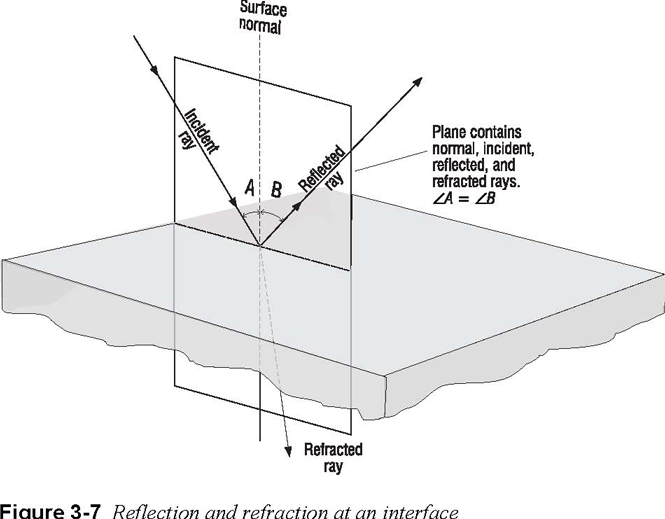C. Refraction of light from optical interfaces
When light is incident at an interface—the geometrical plane that separates one optical medium from another—it will be partly reflected and partly transmitted. Figure 3-7 shows a three-dimensional view of light incident on a partially reflecting surface (interface), being reflected there (according to the law of reflection) and refracted into the second medium. The bending of light rays at an interface between two optical media is called refraction. Before we examine in detail the process of refraction, we need to describe optical media in terms of an index of refraction. 
1. Index of refraction.
The two transparent optical media that form an interface are distinguished from one another by a constant called the index of refraction, generally labeled with the symbol n. The index of refraction for any transparent optical medium is defined as the ratio of the speed of light in a vacuum to the speed of light in the medium, as given in Equation 3-1. 
where
c = speed of light in free space (vacuum)
v = speed of light in the medium
n = index of refraction of the medium
The index of refraction for free space is exactly one. For air and most gases it is very nearly one, so in most calculations it is taken to be 1.0. For other materials it has values greater than one. Table 3-1 lists indexes of refraction for common materials.
Page: 12345678910111213141516171819202122232425262728293031323334353637383940
| Eyes carePhysicianBate's booksTechnologyForumLaser corre.Blues under eyesburning in the eyesanother diseasesMedical mistery Naturally eyesight correction. No laser eye surgery. Restore eyesight. Vision correction. |




